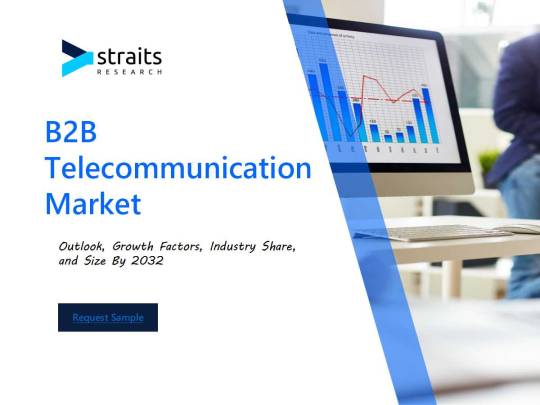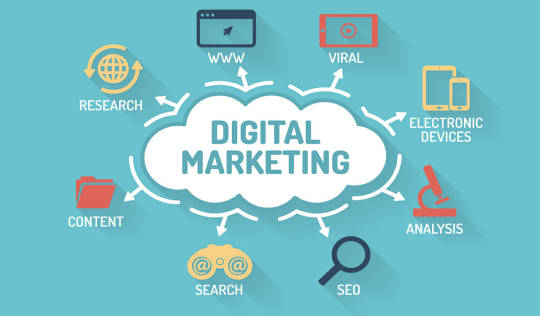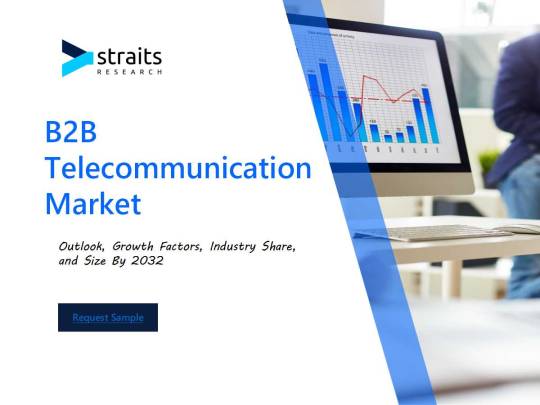#what is b2b marketing
Explore tagged Tumblr posts
Text
Maximising B2B Impact: Event Marketing Planning and Execution with The Ortus Club
The ever-evolving business-to-business (B2B) landscape requires more than just digital campaigns and traditional marketing avenues to make an impact. Hosting effective marketing events has become a cornerstone of establishing relationships, fostering trust, and driving sales. The Ortus Club, a leading name in event planning and execution, offers a comprehensive guide to creating a successful marketing event that aligns with your B2B objectives.
Why Event Marketing is Essential for B2B
For those still wondering what is B2B marketing, it's worth noting that B2B marketing focuses on selling products or services to other businesses rather than to consumers. Building long-term relationships and fostering trust is crucial in this domain, and events serve as the perfect platform for these goals. Not only do events offer immediate face-to-face interactions, but they also provide an environment where businesses can showcase their expertise and solutions in real time.
Phase 1: Research and Planning
In any B2B event, knowing your audience is paramount. Are you targeting C-suite executives, managers, or perhaps technical experts in a particular field? Once you've nailed down the target audience, you can begin to tailor the event's theme, content, and activities to match their interests and needs. The Ortus Club excels in audience analysis, ensuring that your event has maximum appeal and relevance.
Phase 2: Budget and Logistics
Develop a realistic budget that outlines potential costs and forecasts returns. Account for venue hire, technology, catering, and promotional materials. Here, The Ortus Club can guide you through cost-effective options without compromising the event's quality.
Phase 3: Content Creation and Agenda
Compelling content can turn a good event into a great one. Consider incorporating interactive workshops, keynote speakers, or panel discussions, depending on your audience. You can also include Q&A sessions to foster engagement and facilitate dialogue.
Phase 4: Marketing the Event
Given that you're in the B2B sector leverage the most effective channels for your target audience. Utilise LinkedIn, industry-specific publications, and partnerships with other organisations to promote the event. Timing is crucial, so begin promotions well in advance to capture the attention of busy professionals.
Phase 5: Execution and Follow-up
On the event day, be prepared for contingencies and ensure that there's a plan for engaging the attendees from start to finish. After the event, follow up with participants through thank-you emails, surveys, or exclusive content. This keeps the conversation going and lays the foundation for future interactions.
The Ortus Club Advantage
The Ortus Club offers an end-to-end service package that takes the stress out of event planning and execution. With expertise in agenda setting, speaker selection, and venue procurement, The Ortus Club is your trusted partner for achieving measurable results in B2B event marketing.
Ready to transform your B2B marketing strategy through high-impact events? Don't miss the opportunity to collaborate with a leader in the field. Contact The Ortus Club today and let us bring your event visions to life, setting a new standard for what is B2B marketing.
#b2b marketing#events marketing#what is b2b marketing#b2b events#roundtable discussion#b2b networking
0 notes
Text
Marketing is in many ways the biggest translation of my skills and interests to a job that actually makes money. However I hate corporations and advertising is a blight upon the world and I spend my days at best making the CEO rich while contributing nothing else to society
#like there are a lot of ways to frame what I’m doing in an ok light..#one of the reasons I like b2b is even tho it’s dull it’s not invasive to people’s personal lives#and at its best I’m making people who would benefit from a product or service know about them and can find them#and in b2b like ideally. helping other people do well enough that they don’t have to lose their jobs#but in practice? some of that if you cling to it but the end all is always how much money can the ceo take home#idk maybe I would feel different if I switched to nonprofit eventually???#I applied for some of that in my last job search but never heard back#I never even meant to work in marketing I just ended up here and don’t really see another path forward where I can stay financially secure#which is sooooo rare now I don’t want to take that for granted
12 notes
·
View notes
Text
Mastering B2B Sales in a Digital World: Overcoming Complacency and Winning Prospects
youtube
In this powerful and thought-provoking video, Digital Assassin’s SLO builds on his previous discussion about the book Shift and delves deeper into what it takes to succeed in B2B sales in the digital era. Let's explore how technology changes, the complacency of incumbents, and proactive digital marketing can propel your sales strategies forward.
The biggest challenge in B2B sales is not only competing with other vendors but also overcoming complacency. Most prospects are comfortable with their existing suppliers and are not actively searching for alternatives. Without a compelling reason to change, they stick with the status quo. So, how do you break through and win new business?
This video explores the trigger events that create opportunities for sales teams, such as technological advancements, industry regulations, and shifts in competitive landscapes. When these disruptions occur, businesses begin to look for new solutions, and that’s when sales teams need to be ready.
With the rise of digital research, buyers are no longer reliant on salespeople for information. Instead, they turn to the internet to educate themselves before making purchasing decisions. This shift means that businesses must have a strong online presence, using content marketing and SEO to rank for the right keywords and engage potential customers early in their journey.
Key Points:
Overcoming incumbent complacency.
Leveraging digital content for better engagement.
Using industry shifts like ISO certification to your advantage.
If you’re looking to refine your B2B sales strategy and leverage digital tools to win more prospects, this video is a must-watch. Stay ahead of the competition by understanding how to position your brand effectively in an increasingly digital world. Thanks for watching and I hope you find value in this video so please subscribe to my channel to get more updates. Leave a comment below on what you think and if you have any questions regarding this video.
#b2b marketing#mastering b2b sales#best b2b marketing strategyb2b sales in a digital world#what is b2b digital sales#how to overcome complacency with b2b#b2b sales techniques#the best b2b marketing advice#Youtube
0 notes
Text

#B2B Telecommunication Market#B2B Telecommunication Market Share#B2B Telecommunication Market Size#B2B Telecommunication Market Research#B2B Telecommunication Industry#What is B2B Telecommunication?
0 notes
Text
How Content Marketing Works?
Introduction:
Content creation & marketing has been a core part of Marketing for a long time. But what many people get wrong when creating a content marketing strategy is Storytelling!
Storytelling can be the difference between marketing that is impactful and something which is just another Ad on social media.
Needless to say, storytelling is not the only thing that is important for content marketing, there are many things that one has to determine when creating their content marketing strategy. Target audience, brand voice, consistency, quality, brand colours, type of content etc. In this article we’ll look at the needs & ways to create a content marketing strategy that works best for your brand & business.
Why do you need Content Marketing?
Content Marketing is the process of creating & distributing various types of content like videos, articles, social media posts, blogs etc. to attract the attention of your target audience, spread awareness about your brand & convert the same audience into loyal customers.
Content marketing has been around since old times. From the town crier selling newspapers in the city square to the pop-up ads that you see after visiting a website. The most visible difference is the priority given to the way we market our content today.
Research shows that businesses with blogs get 67% more leads & 67% marketers claim to have seen an increase in leads due to B2B content marketing.
With the current algorithms of social media platforms which pushes short video content, Instagram reels & Youtube shorts have shown to be nearly 88% more effective when included in content marketing plans.
Benefits of Content Marketing:
Online Visibility
Better Lead Generation
Customer Loyalty
Creating a Content Strategy from Scratch
To be able to take full advantage of content marketing one needs to prepare a well researched strategy. A usual content marketing strategy consists of the following:
Goals & KPIs
Determining Target Audience
Content Research & Type
Distribution Channels
Re-evaluation & Optimizations
SEO’s role in Content Marketing
SEO or Search Engine Optimisation is the king of marketing your content organically to your target audience. Thus, it is imperative to optimise your content as per the latest SEO standards set by search engines like google chrome, firefox etc.
It is also important to make sure that you:
Avoid keyword stuffing
Use relevant & specific keywords
Optimise meta-tags & description properly
Content Marketing using A.I

Content Marketing is no exception to this, with A.I you can boost your work efficiency in many stages of your plan, such as:
Automated Creation
Personalisation
Predictive Analysis
Evaluation & Measuring your Success
Understand that marketing is a never-ending process. This is because the factors that drive the market & the customers are always changing. Thus, making it detrimental to your content marketing efforts.
Measure your content’s marketing effectiveness by:
Tracking Engagement Metrics
Monitoring Website Traffic
Lead Generation
Social Shares
SEO Performance
#contentmarketing#content marketing strategy#digital content marketing#content creation services#B2B content marketing#social media content marketing#content marketing tools#content marketing trends#content distribution#what is content marketing#content marketing examples#content marketing for SEO#content optimization#SEO content creation#content marketing keywords#blog content marketing#video content marketing#email content marketing#infographic content marketing#long-form content#interactive content marketing#content marketing ROI#content engagement metrics#organic content growth#traffic through content marketing#lead generation through content#content marketing for small businesses#content marketing for e-commerce#healthcare content marketing#SaaS content marketing
1 note
·
View note
Text

How to Start a Car Rental Business: Essential Steps and Tips
Discover what you need to start a car rental business and tips for success. QoreUps Academy provides a detailed guide for launching a car rental venture, including insights specific to New York.
#what do i need to start a car rental business#how to start a car rental business in new york#entrepreneur#startup#branding#marketing#b2b#onlinerentalbusiness#online business#saas#saasbasedplatform
0 notes
Text
Strategy for Email Marketing | Liveblack

Even after so many years, Email marketing holds that vintage charm as one of the best ways to market your business. It has always been an important part of marketing to build trust, get important feedback, promote offers & sales, and much more. More than half of the world’s population uses email, and to stand out from the others you have to put effort into creating unique marketing email campaigns.
What is email marketing?
A simple term we will define simply — this is direct marketing to promote your products or services through email.
How to do email marketing?
To all the businesses that want to send emails in bulk, you cannot send those bulk emails through Gmail or Yahoo. Because they are designed to send personal mail and not bulk mail. You have to use email marketing tools. An email marketing platform also referred to as an email service provider (ESP) helps you send bulk marketing emails.
ESPs satisfy security checks and have an infrastructure to deliver the mail in bulk. These marketing tools come with a CRM (Customer Relationship Management) to grow your business.
Email marketing best practices are good but, you have to think and grow according to digital marketing recent trends to stay relevant and unique in your ways.
As we are here to explore the benefits of email marketing in B2B, first, we need to understand what B2B Email Marketing is. B2B (business-to-business) email marketing is an effective way to reach other businesses in the business sector. It allows businesses to connect with their target audiences to build brand awareness and increase sales.
Understanding the needs of the target audience and crafting emails in a way that can provide valuable offers to other businesses can benefit you in many ways. You must customize your email marketing campaign accordingly to satisfy your target’s requirements.
To make your email marketing campaign successful, you should understand why email marketing is important and how this can thoroughly work in your favor.
Some email lookup tools can help you find potential leads. As a business, with the help of these tools, you can verify the email addresses of the potential leads you get. Check whether those emails are accurate or not that you have collected for the email campaigns. For this reason, email lookup tools help you check and validate the email addresses you have found.
You can enter an email address into the search bar of this tool and check whether it’s accurate.
Now that we know what email marketing is and how it affects B2B sales and lead generation, let’s dig deep into tips on email marketing.
1 — Personalize your message
If customers receive mistargeted mail they will leave immediately or unsubscribe from the mail service. What you can do to ignore such a mess, is personalize your message. Thanks to the digital age, you can have information about their likes and tastes to use in personalizing their messages. Use social media analytics for which product or service customers engage with more.
You can generate lead forms where you can collect email addresses with other necessary fields. With the help of this information given by customers, it can be easy for you to personalize email in a way that attracts them.
Do you know? A study by Yes Lifecycle Marketing found that personalized subject lines increase open rates by 29–50%!
2 — Optimize for mobile
Having a mobile-friendly website and email campaigns brings you a lot of benefits. However, a miserable mobile experience can lead you to a loss. As 70% of emails are open on mobile, it has to be perfect. Email marketing B2B can lead mobile CTAs to your website. So, it must be mobile optimized. For this, remember the following points -
Text can be read easily on a single screen
Email & website landing pages must be loaded quickly
Font visibility should be easy for the eye
3 — A catchy subject line has the power to grab the attention
Well, what’s the first thing a person notices when they open a mail? Of course, it is the subject line. So, make it worth your while. The subject line should be catchy as well as relevant. But to be more precise, you have to remember such points -
Mention something in the subject line that will resonate with customers
Use emojis as Nowadays people use the language of emoji to express
Refrain from using weak language
Make people curious about what the mail holds
Make the subject line relevant so people can get what the mail is about
4 — Practice A/B testing
To use perfect strategies for email marketing, A/B testing is a must. Why? You need to practice this thing to better understand how this mail looks when it is generated. Things to look at such as — subject line, layout, button and button color, and everything that makes mail up-to-date.
A/B testing can lead you to a conclusion about what you need to take and what to change. You can conclude how engagingly you can design an email.
5 — Set up triggered email
Triggered emails are automated messages sent to subscribers for specific conditions. For example, any upcoming event can trigger such messages. Research shows that triggered emails have a higher opening rate. You can have such emails for events like
If customers abandon their cart
A welcome email
Feedback & review request email
6 — Stories can catch attention
Stories have the power to hold the attention. Use stories to engage your customers through email marketing.
Telling a story behind your products or services will interest users to see how things worked from your side. What is the result? How is this particular product or service made or formed? In this way, your customers know about your top-quality products or services.
On the other hand, you can describe your story from the perspective of customers. For example, taking a pain point or a problem faced by a user and converting it into storytelling for how you can come up with an idea that solves that pain point. It can get you impressive results.
Tell your story in a creative way to connect with your audience.
7 — Discover the correct time to send emails
You have to pick the best time to send marketing emails, and it’s no magic to pick any time and make it the best to send emails. Instead, you should test, track, and find out which is the best time. Because not every business has the same customers, and not everyone has the same email marketing strategy.
This strategy depends on different factors including the purpose of your mail and the audience that interact with it.
Let’s check out how to write business emails and tips for email writing to check the correct way to communicate with your audience.
With the increased digitization of everything, make sure you communicate effectively for your business.
Look at all these steps to write a professional email.
An interesting subject line is the key
Give acknowledgement
Write a detailed message that describes your intent
Add a call-to-action at closing
Don’t forget to end your email with your signature
This digital age has introduced us to AI. AI is a powerful tool, and AI in marketing can help collect data about users’ insights and trends that keep the digital world moving. It can also help create content that resonates with your brand perspective, making your messaging comprehensible.
You have already heard about ChatGPT, and we know that. But what is the reason to mention this term here in the blog of email marketing? Well, wherever you go on this date, ChatGPT and AI will never stop following you. Whether you need a friendly tone, a professional tone, or an approachable tone, ChatGPT has a solution for everything. Ask ChatGPT for what you want, and it prepares content accordingly.
Give a brief to this AI tool and see the magic. It can write an attractive email as ChatGPT for email writing has a potential draft of relevant emails. It can also adopt a different style depending on your preferences to draft the email the way you want.
Set a follow-up email to your prospects so they can know you’ve contacted them before. Set your follow-up email with an email template to remind them of an important date or time.
Explore the benefits of email marketing with Liveblack to grow your business. Even after so many years and with new tools like AI, email marketing is still evergreen. We have a team of experts who will help you design the strategy for email marketing for business growth.
#What is email marketing#How to do email marketing#Email marketing best practices#digital marketing recent trends#benefits of email marketing#B2B Email Marketing#email lookup tools#tips on email marketing#Email Marketing B2B#Strategy for Email Marketing#best time to send marketing emails#how to write business emails#Liveblack
0 notes
Text
Key Differences in Strategies Between B2B Marketing and B2C Marketing
Explore the nuanced strategies that distinguish B2B marketing from B2C marketing. Discover how targeting businesses (B2B) differs from targeting consumers (B2C) in terms of messaging, channels, and relationship-building approaches. Learn about the unique challenges and opportunities each strategy presents, from lead generation tactics to brand positioning.
Visit Us For More Information:- https://digitalretina.in/difference-between-b2b-and-b2c-marketing/
Call Now:- 9953023123
#B2B Marketing and B2C Marketing#difference between b2b and b2c#what is the difference between b2b and b2c marketing
0 notes
Text
Best Social Media Management Services in Pune 2024, Are your social media efforts not meeting expectations? Now more than ever, social media is a “pay-to-play” environment that requires every resource you have a coherent action plan, 100 percent commitment, and a well-defined budget.
In addition to organic reach, getting content in front of your target audience can be a challenge without shelling out money on advertising, whether for an ongoing campaign or a one-time sponsored post.
To maximize your online presence, BeingMash Internet Marketing Agency integrates social media management Services in Pune into your overall marketing strategy.
The right Facebook or Instagram management Services can attract, nurture, and convert followers into loyal customers.
The social media management campaigns our team has implemented and monitored for our small business, corporate or franchise clients are proof of this.
Social media marketing (SMM) Services help businesses promote their product or brands on social media platforms.
Our Social Media Marketing Services in Pune are often used by businesses that want to retain their customers online but lack the skills or staff to produce effective content.
We also provide Social Media Optimization Services to optimize your social media profiles.
Social Media Marketing Services can provide a wide variety of solutions, including account management, content creation, and consumer engagement.
Social media management isn’t just a service, it’s an investment. And with BeingMash, your return is guaranteed. Stop struggling for organic reach and let us show you the power of strategic social media in Pune.
But what exactly do we do? We’re your one-stop for social media management:
All Social Media Accounts Management: We take the reins, freeing you to focus on what you do best.
Content Creation: Eye-catching visuals, witty captions, and stories that captivate your audience.
Consumer Engagement: We spark conversations, build communities, and turn followers into fans.
Contact us today and watch your social media presence explode!
Call: 7975525166, 7892007121
Your Search for Experienced Social Media Management Services in Pune Ends Here!
BeingMash offers comprehensive Facebook and Instagram strategies as well as Google ads and YouTube management.
In fact, BeingMash provides a full suite of social media marketing and management Services in Pune that company owners and marketers (no matter their niche) can believe in.
Furthermore, we integrate our social media follower growth tactics into your email marketing campaigns for targeted reach and engagement.
We also align your social strategy with your website optimization tactics to help increase site traffic and boost your conversion rate. In this way, your social media strategy is supported by your other marketing strategies and vice versa.
4.9-Star Social Media Management Strategies You Can Rely On
For more than 8+ years, clients from various industries have proven the viability of BeingMash‘s platform marketing strategies. Our results-driven strategies have raised us to the status of a leader among social media management companies in Pune.
Our enterprise and small business social media management strategies are passionately executed by our account managers, strategists, and specialists. That’s why the results are even better than expected.
Why are we the best? Because our passionate team of account ninjas, strategists, and specialists pour their hearts into every client. They craft strategies that blow expectations out of the water, delivering results that leave you speechless. Read more
#digital marketing#seo#seo company in gulbarga#affiliate marketing#best digital marketing courses#advantages and disadvantages of digital marketing#b2b vs b2c digital marketing#15 types of digital marketing#5 simple ways to do digital marketing#best online digital marketing courses#digital marketing 2023#learn digital marketing#digital marketing basics#digital marketing course#what is digital marketing#digital marketing tutorial#digital marketing examples#digital marketing training#digital marketing explained#simplilearn digital marketing#digital marketing in 5 minutes#digital marketing explainer video#online marketing#internet marketing#digital marketing tutorial for beginners#marketing 4.0
0 notes
Text
#marketing for b2b businesses#Your sales team’s time is precious and should be dedicated to what they do best – selling. Our services enable this focus by doing the heav#we bring warm leads to your doorstep.#These are prospects who already understand your value proposition and are ready for dialogue. Let us handle the prospecting#so your sales team can concentrate on converting warm leads into loyal clients.
0 notes
Text
Digital Marketing
In today's digital age, having a strong online presence is crucial for any business to succeed. Digital marketing refers to the use of digital channels and technologies to promote products and services, build brand awareness, and engage with customers. From social media and email marketing to search engine optimization and content marketing, digital marketing encompasses a wide range of tactics that can help businesses reach their target audience and drive sales.
One of the key advantages of digital marketing is its ability to reach a large and diverse audience. Unlike traditional marketing channels such as print or broadcast media, digital marketing allows businesses to target specific demographics and interests with greater precision. This not only saves time and money but also increases the likelihood of reaching potential customers who are more likely to be interested in their products or services.

Here are some common digital marketing tactics that businesses can use to promote their brand and drive sales:
Search engine optimization (SEO): SEO is the practice of optimizing your website to rank higher in search engine results pages (SERPs) for relevant keywords and phrases. By improving your website's visibility on search engines like Google, you can attract more traffic and potential customers to your site.
Social media marketing: Social media platforms like Facebook, Instagram, and Twitter are powerful tools for building brand awareness, engaging with customers, and promoting products and services. By creating compelling content, engaging with followers, and using targeted advertising, businesses can leverage social media to reach their target audience and drive sales.
https://www.linkedin.com/in/xpartrobiulislam
Email marketing: Email marketing involves sending promotional messages and newsletters to a list of subscribers. By providing valuable content and offers, businesses can build relationships with customers and encourage repeat purchases.
Content marketing: Content marketing involves creating and sharing valuable and relevant content that attracts and engages a target audience. From blog posts and videos to infographics and podcasts, content marketing can help businesses establish themselves as industry leaders and build a loyal following.
Pay-per-click (PPC) advertising: PPC advertising involves placing ads on search engines and social media platforms and paying each time someone clicks on an ad. By targeting specific keywords and demographics, businesses can increase their visibility and drive traffic to their website.
#digitalmarketing
#socialmedia
#marketing
#contentmarketing
#SEO
#emailmarketing
#PPC
#onlinemarketing
#influencermarketing
#digitalstrateg
#marketingstrategy
#influencermarketing
#branding
#xpartrobiulislam
#digital marketing#digital work#seo consultant#email marketing#b2b lead generation#seo#what is digital marketing#Xpart Robiul Islam
1 note
·
View note
Text
Just to make my position on the subject of Crab Day clear, since word is going around that the idea came from a highly objectionable person, I’m going to quote rather than reblog @skaldish:
This I agree with. I've seen other posts go around about it, so it wasn't just that one person.
But to make it clear, I'll take the time to explain to people why participating in Crab Day (and financially supporting Tumblr in general) is important:
It's unfortunate, but in this day and age, large websites like this one can't function without an exorbitant amount of income. For other social medias, the bulk of this income comes from Business-to-Business (B2B) transactions, often in the form of selling user data.
The thing y'all need to understand is that wealth is VASTLY different in the B2B economy than it is with B2C (business-to-consumer) economy. In fact, this is a huge reason why we're in an economic crisis...because the US is a nation with two economies, and the power of the dollar is astronomically different between the two of them.
Tech's standard of wealth is based in the B2B economy. Because Tumblr is in the Tech sector, it needs to play according to Tech wealth. Unfortunately, the way you earn Tech wealth is by selling Tech-related B2B products, and for social media websites, that product is user data.
It's a competitive market that sets a new standard of rotten with every transaction. In order to acquire data that's more valuable than your competitor's data, you have to be less ethical about how you source it...and also be willing to cross moral boundaries in regards to who you sell it to.
If Tumblr finds no other way of sourcing income, they have no choice but to participate in this data market or shut down.
However, Tumblr is the home of the secret third thing. In this case, this secret third thing is to work with the community rather than exploit it.
(That's what it looks like to me, anyway. I nether trust nor doubt Tumblr's words; that's not what's winning me over. Instead, I'm curious to know where they plan to go with this, because this is unusual as far as business practices go and I think it would be cool if they're trying to set a more holistic precedent for the social media of the future. I won't be able to see that conclusion if they go bankrupt though.)
So yes, participate in Crab Day. Just because one unpleasant person also condones it doesn't mean it's a bad idea.
4K notes
·
View notes
Text
So... Shapeways is going bankrupt.
This is particularly irksome for me, as that's a good 1/3rd of my monthly income, so I'm crossing my fingers while I start setting up a new store on cults. I have literally thousands of items so getting them all up is going to take ages.


But why did this happen?
Well I'll fucking tell you what I think happened.
It was a company run on arrogance and cowardice.
Shapeways made its mark as the cafepress of 3d printing. The weight of this was their marketplace that let people sell prints directly to customers without having to do the printing themselves. At its peak, I made more from Shapeways than from my day job.
The problem was that Shapeways put zero effort into the marketplace. They'd send some of us to a con to promote the idea of 3d printing game minis a couple of times, sure, but when it came to actual site maintenance and design every suggestion and request by sellers was roundly ignored. We asked for better search and categorization options. We asked to be able to name variants in our stores. We asked for better communication from the print techs. We asked for accurate subcategories that actually reflected how customers looked for items. None of it was done.
As such, the site was baffling to customers and difficult to understand. This was made worse by Shapeways' continual renaming of their materials. So after a couple of years Shapeways announces that they're not going to do anything for the marketplace because it's underperforming, and are going to focus on B2B, and in doing so they buried the marketplace in a tiny little link on the front page.



Overnight sales plummeted. We complained again, nothing was done. We asked for a different URL that went straight to the marketplace (something that would literally cost them $80 to do) that we could direct customers to, we were ignored.
The marketplace is underperforming, so we won't put in the effort needed to make the marketplace perform. Makes perfect sense.
Prices go up. Shipping goes up substantially, and then it was a thousand little cuts. The auto-checks were altered to make it impossible to verify anything manually with any accuracy, so it became harder to design for the limitations of their printers.
The site slowed down substantially so every click had a several second pause, making shopping and maintaining frustrating and unpleasant. Shipping costs to many areas of the world became insanely high, effectively cutting off entire markets.
Want to not be Shapeways? Then remember this:
Your users know more about your site experience and their own needs than you do.
If you have a sales site, and the people selling through it say "this isn't working, we need this" then maybe you should listen to them and not just say 'you're wrong' to their faces.
Oh, and also, if goddamn Rolls-Royce comes in filing false DMCA claims over the use of the word "Phantom" in any context on your site, you don't take every item through a multiple day review for every edit and say "LOL, we can't do anything"
You take them to court for abusing the system on behalf of your user base, you fucking bootlicking cowards.
OH, AND I ALMOST FORGOT!
I HAD TO FIND OUT ABOUT THIS FROM A DM ON TWITTER.
They've sent me a check every month for half a decade and they don't even send a "We're closing shop" email.

Look upon my prints, ye mighty, and despair.
If you want to help me though the meantime, here's my paypal.me and my gofundme.
102 notes
·
View notes
Text

#B2B Telecommunication Market#B2B Telecommunication Market Share#B2B Telecommunication Market Size#B2B Telecommunication Market Research#B2B Telecommunication Industry#What is B2B Telecommunication?
0 notes
Text
Influencer Outreach: A Comprehensive Guide to Building Successful Partnerships
In these days’s digital panorama, influencer advertising has grow to be a powerful approach for manufacturers looking to extend their attain, enhance credibility, and drive conversions. By taking part with influencers who've a dedicated following, businesses can faucet into engaged audiences that believe and value the guidelines of their favourite content creators. However, a hit influencer outreach calls for a nicely-notion-out technique. This guide will take you through the key steps to identifying, accomplishing out to, and participating with influencers efficaciously.
Best strategies for influencer outreach in 2025
Understanding Influencer Outreach
Influencer outreach is the technique of setting up connections with influencers to create jointly beneficial partnerships. The aim is to leverage their target audience to boom emblem recognition, generate leads, or enhance sales. Unlike conventional advertising and marketing, influencer advertising is built on authenticity and personal connections, which makes it more appealing to modern clients.
Step 1: Define Your Objectives
Before accomplishing out to influencers, it's miles essential to outline your desires. Ask yourself:
Are you seeking to boom emblem cognizance?
Do you want to drive traffic in your website?
Are you targeted on generating income?
Do you want to construct long-term partnerships with influencers?
Having a clean know-how of your objectives will help you pick out the right influencers and degree the achievement of your campaign.
Step 2: Identify the Right Influencers
Not all influencers can be a good fit to your brand. To locate the right ones, recollect the subsequent factors:
Relevance: Ensure the influencer’s content aligns along with your emblem’s values and target market.
Engagement Rate: High follower counts do no longer usually translate to excessive engagement. Look at likes, feedback, and shares to decide how engaged their target market is.
Authenticity: Followers can sense whilst an influencer is actually captivated with a logo versus whilst they're merely selling for a paycheck. Authenticity is key to a success influencer marketing.
Platform Suitability: Different influencers dominate distinctive platforms. For example, Instagram and TikTok are fantastic for lifestyle and beauty manufacturers, while LinkedIn is extra suited for B2B collaborations.
Step three: Research and Shortlist Influencers
Use equipment like BuzzSumo, Upfluence, or Heepsy to discover potential influencers for your niche. Once you have got a list, examine their content, target market demographics, and beyond collaborations to decide their suitability.
Step 4: Craft a Personalized Outreach Message
Influencers acquire numerous collaboration requests each day, so your outreach message needs to face out. Personalization is fundamental. Here’s a way to craft an powerful message:
Start with a Genuine Compliment: Show which you have engaged with their content.
Introduce Your Brand Briefly: Keep it concise and compelling.
Explain Why You Chose Them: Mention what you recognize about their content and why you trust they are a fantastic in shape.
Present the Collaboration Opportunity: Clearly define what you're providing and the way it benefits them.
Call to Action: Ask in the event that they could be interested and how they would really like to continue.
Step 5: Follow Up Professionally
If you don’t receive a response, observe up after a few days. Influencers are often busy, and a polite follow-up can remind them approximately your offer. However, avoid being too chronic as it can come off as pushy.
Step 6: Negotiate Terms and Set Expectations
Once an influencer expresses interest, talk the phrases of the collaboration. Key points to cowl include:
Deliverables: Define the kind and variety of posts, movies, or tales.
Timeline: Agree on deadlines for content advent and posting.
Compensation: Decide whether the collaboration is paid, barter-based, or associate-primarily based.
Content Guidelines: Provide any vital logo recommendations while permitting creative freedom.
Performance Tracking: Determine how fulfillment will be measured (e.G., engagement, website traffic, conversions).
Step 7: Build Long-Term Relationships
Instead of one-off collaborations, remember building long-term relationships with influencers. When influencers emerge as brand advocates, their promotions experience extra proper and credible. To foster sturdy relationships:
Engage with Their Content: Like, comment, and percentage their posts even while you’re not walking a campaign.
Provide Creative Freedom: Trust their expertise in content material introduction.
Offer Exclusive Perks: Provide early get right of entry to to merchandise or invite them to special events.
Step 8: Monitor and Measure Results
Tracking the fulfillment of your influencer marketing campaign is important to know-how its effect. Use tools like Google Analytics, UTM monitoring, and social media insights to measure key overall performance indicators (KPIs) consisting of:
Engagement Rate: Likes, feedback, shares, and saves.
Reach and Impressions: Number of those who saw the content.
Click-Through Rate (CTR): Percentage of users who clicked on the provided links.
Conversion Rate: Number of individuals who completed the favored motion (e.G., purchase, signal-up).
Step 9: Optimize Your Strategy
Once you have got analyzed the outcomes, refine your approach for destiny campaigns. Identify what worked well and areas for improvement. Consider:
Testing unique sorts of content material codecs (videos, carousel posts, reels).
Experimenting with numerous messaging styles.
Collaborating with influencers in one-of-a-kind niches.
Common Mistakes to Avoid
Focusing Only on Follower Count: A smaller influencer with a devoted audience can regularly yield higher results than a celebrity influencer with a disengaged following.
Ignoring Audience Demographics: Ensure the influencer’s target market aligns along with your goal market.
Being Too Controlling: Influencers know their audience fine; provide them innovative freedom.
Not Disclosing Sponsored Content: Compliance with FTC hints is crucial for transparency and accept as true with.
Neglecting Relationship Building: Strong relationships cause greater true and effective campaigns.
#Best strategies for influencer outreach in 2025#influencer marketing#digital marketing#social media optimization
4 notes
·
View notes
Text

Starting a Car Rental Business: Key Considerations
Learn what it takes to launch a successful car rental business. QoreUps Academy's guide covers everything from initial planning to essential resources and tips. Tap to visit them!
#what do i need to start a car rental business#starting your own car rental business#entrepreneur#startup#marketing#b2b#onlinerentalbusiness#saas#online business#saasbasedplatform
0 notes